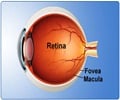- Facts about vitreous detachment: The National Eye Institute
- Denniston AKO, Murray PI. Oxford Handbook of Ophthalmology (OUP), 2009
- Jackson TL; Moorfields Manual of Ophthalmology, Mosby (2008)
About
What is vitreous detachment?
Vitreous is a gel-like substance that fills most of the interior of the eyes; it helps in maintaining the round shape of our eyes. The vitreous is attached to the surface of retina (light sensitive tissue) by means of fine fibres. With progressing age, the vitreous shrinks, pulling the intertwining fibres from the retina. The fibres may break, detaching the vitreous from the retina. Most cases of vitreous detachment do not affect vision and require no treatment. Posterior vitreous detachment is the commonest type of vitreous detachment. Vitreous helps to maintain the shape of our eyes; it acts as a shock absorber; it allows the transmission of light from the external environment to the retina.
What are the risk factors for vitreous detachment?
- Vitreous detachment is common in people over age 50; it appears to be more common after age 80.
- Those who have had a cataract surgery are at increased risk.
- Near-sightedness is another risk factor.
- Inflammation or bleeding inside the eyes is a potential risk factor.
- Injuries sustained to the eyes following blunt trauma, accidents, or falls places the eyes at an increased risk of vitreous detachment.
What are the
Floaters: People describe dark spots or objects “floating” in the field of vision; other description include "spots and dots," "a cloud of smoke," or a "swarm of bees." It is to be noted that this symptom can also occur in other cases, namely retinal detachment (torn retina) and bleeding inside the eyes.
Lightning flashes: When vitreous separation exerts a pull on the retina (during eye movement), the patient sees flashes (photopsia). These flashes may be described as "a sparkle or twinkle," "a disco light," or "fireflies."
Vitreous detachment is usually painless and doesn’t usually impair vision. However, complications such as retinal detachment and macular hole can lead to loss of vision. A sudden increase in the number of floaters or flashes, and difficulty with vision warrant immediate consultation with an ophthalmologist.
How is a vitreous detachment diagnosed?
An eye specialist performs a comprehensive examination of the eyes after dilating the pupils with drugs (applied as drops). A special microscope called slit lamp may be used to view the interior of the eyes. Sometimes, ultrasound examination is employed. Timely treatment can prevent the complications of vitreous detachment.
How can vitreous detachment be treated?
Vitreous detachment may not need treatment if the retina is intact, that it has not developed tears. The doctor may ask for a follow-up examination at a later time. Tears in the retina can be treated with laser or cryopexy. Cryopexy is a freezing treatment that helps to close the tear in the retina.
Retinal detachment warrants surgical intervention. Conditions such as macular hole and retinal detachment can lead to permanent loss of vision if left untreated. Hence, it is important to make an emergency appointment with an ophthalmologist whenever you feel a sudden change in your vision, or if you see more floaters or flashes than usual.
Frequently Asked Questions
1. Which doctor treats vitreous detachment?
Vitreous detachment is treated by an opthalmologist.
2. Is it okay to see floaters in my field of vision all the time?
Floaters may be due to vitreous detachment, bleeding inside the eyes etc. Most cases are safe and do not warrant urgent intervention. However, if you observe a sudden increase in the number of floaters, or you see flashes of light more often, rush to an eye specialist. This may be a symptom of a serious condition like retinal detachment or macular hole.
3. What is a macular hole?
A macula is located in the centre of the eye’s light sensitive tissue (retina). Macular hole is a small break that develops here. This may be caused by vitreous detachment. It is a sight-threatening complication that warrants immediate correction.






